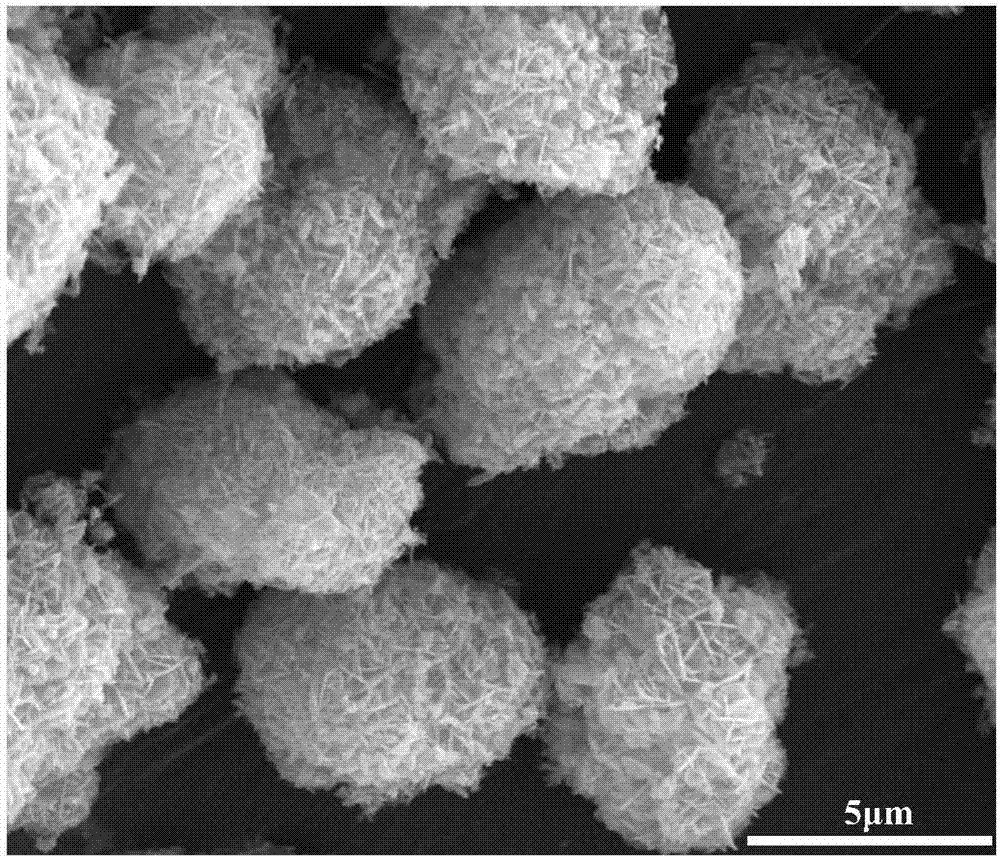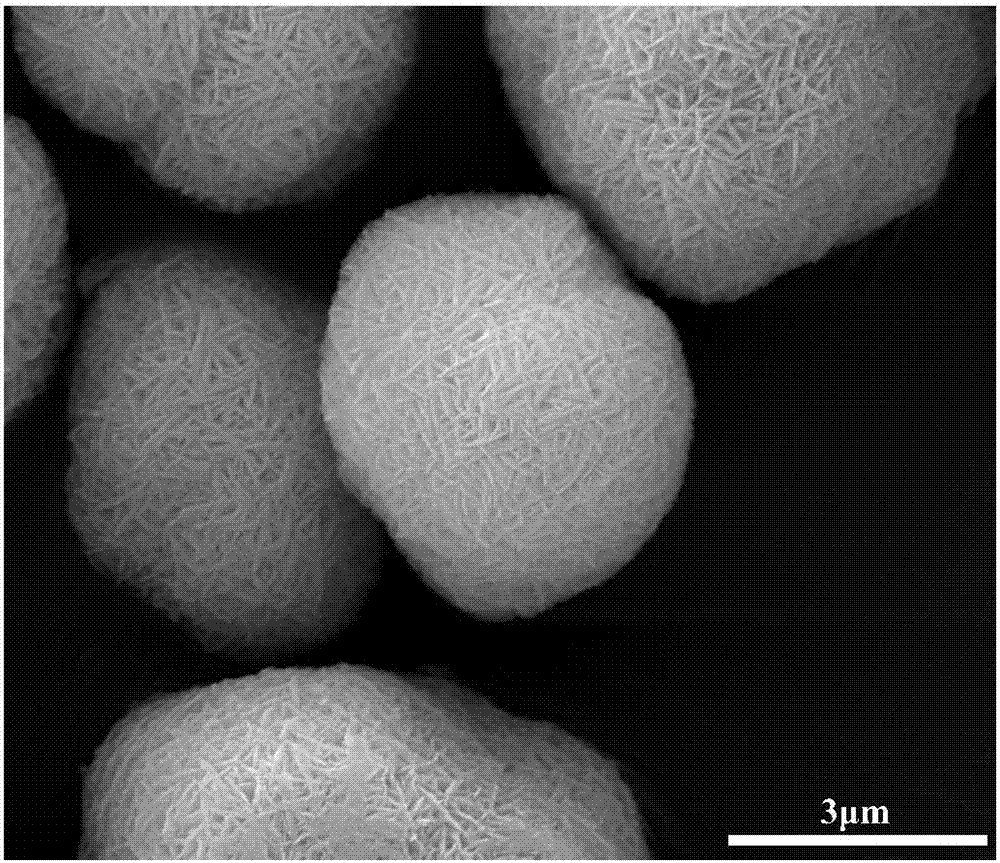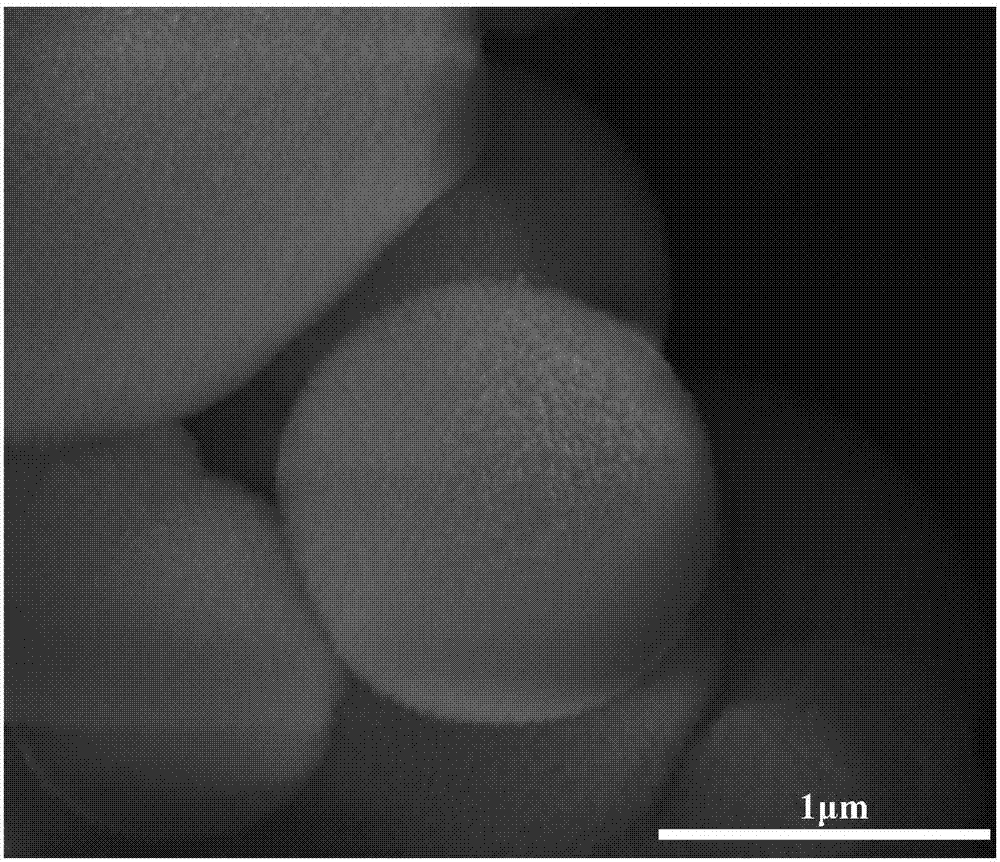Method of preparation of ternary anode material precursor
A positive electrode material and precursor technology, applied in the field of chemical energy storage batteries, can solve the problems of many control variables, the difficulty of effectively controlling the growth of primary particle crystal planes, and the failure to achieve synergy.
- Summary
- Abstract
- Description
- Claims
- Application Information
AI Technical Summary
Problems solved by technology
Method used
Image
Examples
Embodiment 1
[0024] Weigh NiSO according to the molar ratio Ni:Co:Mn=0.7:0.1:0.2 4 ·6H 2 O. CoSO 4 ·7H 2 O and MnSO 4 ·H 2 O, use deionized water to make the total concentration of Ni, Co, Mn ions is 4mol L -1 mixed salt solution, and then use deionized water to prepare NaOH and ammonia water in a molar ratio of 3:1 to make the NaOH concentration 0.2mol L -1 The mixed alkali solution, in the mixed alkali solution, according to the ratio of NaOH and surfactant mass ratio 9:1, add the surfactant complex system, wherein sodium dodecylbenzenesulfonate (LAS) and thiobetaine 12 ( SB3-12) the molar ratio is 6:5.
[0025] Add 100 mL of deionized water into the reaction kettle as the reaction base solution, and add ammonia water to adjust the pH to about 10.5. The stirring speed was set to 600 r / min, and the reaction temperature was set to 55°C. Pump the mixed salt solution and mixed alkali solution into the reaction kettle slowly and uniformly, keep the pH stable at 10.5, the feeding time ...
Embodiment 2
[0028] Weigh NiSO according to the molar ratio Ni:Co:Mn=0.8:0.1:0.1 4 ·6H 2 O. CoSO 4 ·7H 2 O and MnSO 4 ·H 2 O use deionized water to make the total concentration of Ni, Co, Mn ions is 2mol L -1 mixed salt solution, and then use deionized water to prepare NaOH and ammonia water in a molar ratio of 1:2 so that the NaOH concentration is 0.4mol L -1 Mixed alkali solution, in the mixed alkali solution, according to the ratio of NaOH to surfactant mass ratio of 8:1, add surfactant complex system, wherein sodium dodecylbenzenesulfonate (LAS) and thiobetaine 12 (SB3 -12) in a molar ratio of 1:5.
[0029] Add 100 mL of deionized water into the reaction kettle as the reaction base solution, and add ammonia water to adjust the pH to about 11.0. The stirring speed was set to 600 r / min, and the reaction temperature was set to 55°C. Slowly and uniformly pump the mixed salt solution and mixed alkali solution into the reaction kettle. When the reaction is stable, the pH is stable at...
Embodiment 3
[0032] Weigh NiSO according to the molar ratio Ni:Co:Mn=0.9:0.05:0.05 4 ·6H 2 O. CoSO 4 ·7H 2 O and MnSO 4 ·H 2 O use deionized water to make the total concentration of Ni, Co, Mn ions is 1mol L-1 mixed salt solution, and then use deionized water to prepare NaOH and ammonia water in a molar ratio of 2:5 to make the NaOH concentration 0.4mol L -1 Mix the alkali solution, add the surfactant complex system in the mixed alkali solution according to the ratio of NaOH to the surfactant mass ratio of 10:1, wherein sodium dodecylbenzenesulfonate (LAS) and thiobetaine 12 (SB3 -12) The photo molar ratio is 5:1.
[0033] Add 100mL deionized water into the reaction kettle as the reaction base solution, add ammonia water into the deionized water, and adjust the pH to about 11.5. The stirring speed was set to 650 r / min, and the reaction temperature was set to 55°C. Slowly and uniformly pump the salt mixed solution and alkali solution into the reaction kettle. When the reaction is sta...
PUM
 Login to View More
Login to View More Abstract
Description
Claims
Application Information
 Login to View More
Login to View More - R&D
- Intellectual Property
- Life Sciences
- Materials
- Tech Scout
- Unparalleled Data Quality
- Higher Quality Content
- 60% Fewer Hallucinations
Browse by: Latest US Patents, China's latest patents, Technical Efficacy Thesaurus, Application Domain, Technology Topic, Popular Technical Reports.
© 2025 PatSnap. All rights reserved.Legal|Privacy policy|Modern Slavery Act Transparency Statement|Sitemap|About US| Contact US: help@patsnap.com



